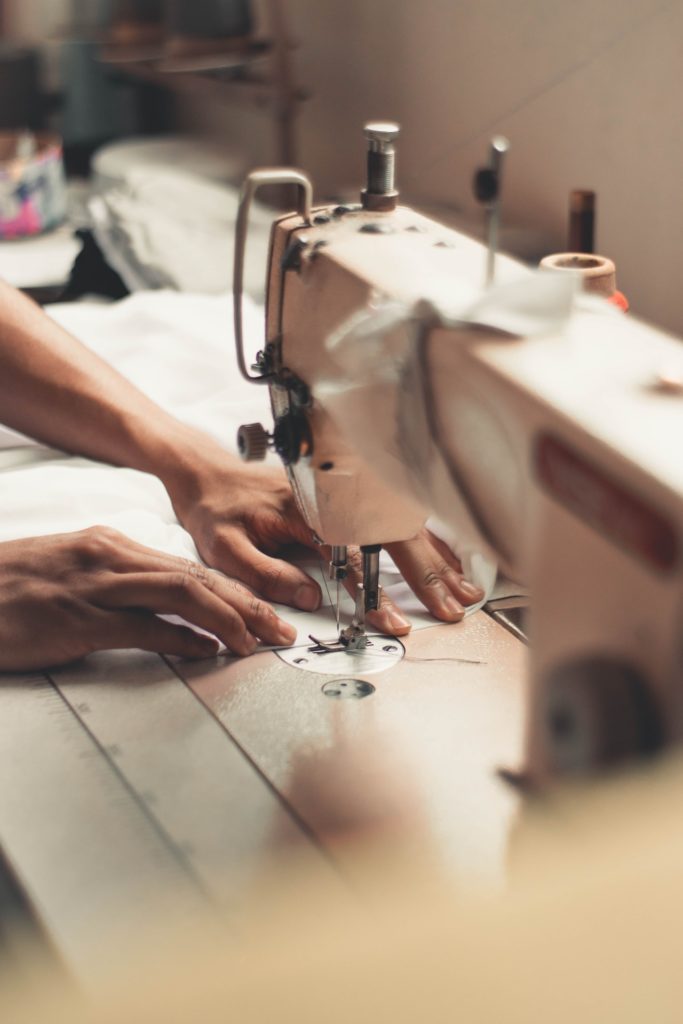Medical Uniform Testing
Today, only essential businesses are open during the COVID10 Pandemic. Medical is defined as an essential business on the frontline fight against the virus, and medical supplies, including uniforms, have been in short supply.
Many people pulled out their sewing machines and began to stitch, but actual medical fabric is uniquely researched and designed to enhance medical practice, protecting the medical staff as well as the patients. Before a stitch is made on a medical uniform, years of research and development and testing by material testing labs, such as NSL Analytical Services, ensures the performance of those fabrics that are used specifically in the medical field.
Fabric for Lab Coat s& Scrubs:

Consider for instance, a high performance stretch lab coat fabric, with comfort but recovery. In this case, recovery means the lab coat goes back to its original shape after stretching or laundering, so doctors have full range of motion without having their uniform sag, snag, or stretch out of shape. On the inside (garment’s interior) the fabric wicks moisture, cools its wearer, and is bacteriostatic to prevent sweat and odor causing bacteria. The fabric’s exterior, or right side that is exposed to patients, is fluid, soil and stain resistant. So, what is in this particular fabric, or other high performance fabric blends to make them so great? Like most uniforms, the fabric described above does exist as a fabric blend. So, how do we know the fabric can perform? Uniform companies do vary, but testing of materials for all fibers and fabrics is the only way this and other uniform companies can have the assurance needed to make their product’s performance claims.
Material testing for fabric can include some or all of the following both ISO/IEC and ASTM standard tests such as: CPSC16 CFR1634 flammability testing, thermal analysis, tensile strength testing, Standard ISO/IEC 17043: 2010 Conformity Assessment, D3786 bursting strength testing method, AATCC 135 (does it shrink after laundering?), and AATCC 179 skewness changes after laundering (does fabric lose its shape after you wash it in machine at home?), aromatic polyamide, D1424 Tearing strength of fabrics by falling pendulum, D261 Tearing strength of fabric by tongue procedure (single rip), D3775 Thread count of woven fabric (how many woven threads per square inch of fabric) D3776 Mass per unit area of fabric (weight of area of fabric). Please note – thread count alone does not indicate fabric strength, but the weight and count together are a good indication of quality and strength of fabric made from a given fiber. This list would be incomplete without: D5034 and D5035 Breaking strength and elongation of textile fabrics by grab or strip material testing lab method. There are still more tests that may be carried out by materials testing laboratories like NSL Analytical Services, but as you can see, there are an incredible number of tests conducted before and after fabrics are sewn into the medical uniforms we see today.
Another factor in the medical uniform performance are the fibers used in the fabric blends. Here are some fibers pros and cons that are considered before adding them into the medical uniform fabric blend.
Cotton: Made from the cotton plant, this fabric is a classic.
- Pros: Cotton is comfortable to wear. It is soft, it breathes and is easy to launder and iron.
- Cons: Cotton wrinkles easily with wear and launderings. Cotton tends to shrink or lose its shape and over time and laundry cycles, cotton tends to fade.
Cotton Material Testing: Flammability, wrinkle release treatments, durability, tensile strength, breaking strength among other tests.
Polyester: made from coal, air water and petroleum, polyester is considered a high tech fabric. Polyester is produced by condensation reaction and all polyesters contain ester functional group COO.
- Pros: Polyester resists stains and wrinkles, is durable, does not stretch out of shape nor shrink or fade in the wash.
- Cons: Polyester does not handle high heat- which melts the fiber, sometimes onto the skin. Polyester is less comfortable to wear than cotton.
Polyester material testing: flame resistance, tensile strength testing, tearing strength, breaking strength and elongation are among a few of the tests used on polyester.
Spandex: Another synthetic fabric, spandex offers some of the same benefits that polyester offers.
- Pros: Spandex stretches with excellent recovery, retains its original shape, does not shrink when laundered, dyes easily and is affordable. It resists perspiration and stains and when a little is blended with other fibers, spandex adds stretch to non-stretchy fibers.
- Cons: Spandex is not breathable, and has low tolerance for abrasion or stress (doesn’t wear well).
Spandex material testing: flame resistance, tensile strength testing, tearing strength, breaking strength and elongation are among a few of the tests used on spandex.
Rayon: rayon is a man-made fiber, but is produced from plant pulp, so it behaves in ways similar to cotton or linen.
- Pros: Rayon is comfortable, soft, absorbent, breathes well and is more affordable when compared to cotton.
- Cons: Rayon wrinkles easily, loses its shape when wet. Good in a blended fabric.
Rayon material testing: Flammability, wrinkle release treatments, durability, tensile strength, breaking strength and more.
